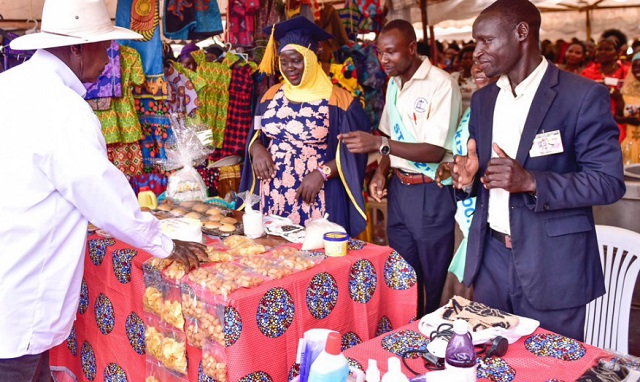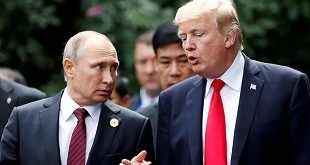
Why President’s false math could be costly
Kampala, Uganda | MUBATSI ASINJA HABATI | President Yoweri Museveni says each beneficiary of the latest government direct cash injection for the poor; the Parish Development Model (PDM), should get at least Shs1 million.
Speaking at the launch of PDM on Feb.26, President Museveni said his main focus now is the “transformation of the population from the culture of working for only the stomach to working for both the stomach and money”.
“We must do so with a calculation (ekibalo),” he said.
But the President’s numbers for the project do not add up and his apparent dismissal of the programme challenges is dangerous, according to fellow politicians and community development experts.
According to the head of the project, Local Government minister, Raphael Magyezi, Uganda has 10,594 parishes. With a population of about 45 million people, that means each parish has about 4250 people.
PDM targets only 39% of Ugandans that are living hand to mouth (those not in the money economy). That is about 18 million people.
However, since the cash injection is meant for the poorest of the poor who are 28% of the population, based on figures from the Uganda Bureau of Statistics (UBOS), each parish has about 1200 people needing this money to start an income generating project that could potentially change their lives for the better.
But, according to Magyezi, the government will this year give each parish only Shs17 million, enough to buy about five heifers. Based on Museveni’s calculation, what he calls ekibalo, only 17 people out of 1200 needy people will get money. According to many commentators, that money is too little per parish.
Magyezi agrees and says the parishes will get more money next financial year; Shs100 million per parish. That is a budget of about Shs1 trillion which, based on FY 2021/22 figures, is about 60% of the total budget for the Ministry of Local Government. Based on this, many commentators say the government cannot afford the Shs100 million per parish that it is pledging. Many say the lack of clarity is a risk to the programme.
“Many government programmes have failed because they lack policies and clear guidelines,” says Deputy Speaker of Parliament Anita Among. She was chairing a session of parliament of the PDM on March 03, about a week after President Museveni launched the programme.
The MPs were concerned that they had been locked out during the design of the programme and remained locked out of its implementation. They want Magyezi to table the PDM guidelines and policy documents so that they debate them.
Many MPs were concerned that, even after the launch, Magyezi; as the Minister in charge, could not lay before the House any policy framework paper for it. Magyezi only laid “implementation guidelines” on the floor of parliament.
“We need people educated on what is being done,” said Deputy Speaker Among.
She said MPs, who ideally should be the ambassadors of the programme, had not got any official information on the PDM, its implementation guidelines and policy at the time it was launched.
“There is lack of inclusion,” said the Deputy Speaker, “This time round we need full inclusion of all stakeholders including legislators since we are representatives of the people.”
Election promises
Over the years NRM has implemented rafts of programs to fight poverty, reduce gross inequality, cause socio-economic transformation and spread prosperity. The government has injected money to benefit the poor through projects like Entandikwa credit scheme of the mid-1990s, through Bonnabagagawale (Prosperity for All), Zoning, Four-acre model, Youth Livelihood, Youth Entrepreneur Scheme, and Women Empowerment Fund, to the latest projects like Operation Wealth Creation of 2013, and Emyooga of 2019.
The effect of these programmes in not clear as the government has not released any performance reports. Meanwhile, general economy reports indicate that poverty levels have either reduced slightly; from 45% by 1995 to 34% in 2000, from 31% in 2003 to 24% in 2005 or risen from 20% in 2011 to 28% in 2020. But none of these trends has been a direct result of the government programmes.
To benefit from PDM one needs to be very poor and a member of a parish cooperative society from which they can borrow part of the Shs17 million to invest in a business venture or increase productivity.
The launch of the programme also operationalised parish Savings and Credit Co-operative Societies (SACCOS) through which people will borrow from a revolving fund. Up to 27 SACCOs in Butebo district received the PDM money during the launch held at Kibuku Primary school in Kibuku district, in Bukedi sub-region.
According to the Uganda Bureau of Statistics (UBOS) figures, about 8.3 million Ugandans live in absolute poverty. And the majority, about 7 million of them, lives in rural districts like Busia, Butebo, Pallisa, Tororo, Budaka, Butaleja and Kibuku that comprise Bukedi Sub-region.
Many of the poor were excited that President Museveni chose to launch latest antipoverty intervention in their region. They subsist on less than $1.90 per day or $694 (approx. Shs2.5 per year). For them, getting Shs1 million would be an early Christmas gift.
The Chairperson LCV for Kibuku District who spoke on behalf of the seven districts of Bukedi, Muhammed Nakeba, said that the sub-region has a conviction that this programme will succeed and transform lives of the people of Bukedi in particular and Uganda in general.
“We have a conviction that this programme will transform our people. We thank the NRM government for the many programmes that aim at improving the social and economic welfare of the citizens,” Nakeba said.
Speaking at the launch, President Museveni echoed the hope of the poor. He said PDM was part of what he promised during the 2021 general elections.
“We promised you that the 2021-2026 term is going to be a Kisanja for creating wealth, jobs and incomes for all Ugandans,” he said.
He said under the leadership of NRM, a foundation for socio-economic transformation has been laid by securing the entire country, building roads, hospitals, schools, water sources, dams to generate electricity and other public services.
He appealed to all leaders – political, religious, cultural, etcetera – to join hands with the government to sensitise the communities about and promote PDM.
“The efforts now should be sensitising our people on how and who to do what. Because we don’t want our people to do what won’t help them.
Through PDM, the President said, the government aims to take services to the people in a more effective way and receive actionable feedback from them on wealth creation and government-provided services to quicken socio-economic transformation.
The President added that NRM has identified four sectors for wealth and job creation which the PDM will advance. These are Commercial Agriculture, Industry, Services and Information, Communication technology (ICT).
“The implementation of these sectors is going to enable us to achieve Middle Income Status at a much faster pace, despite the Covid-19 pandemic that slowed down the economic growth,” Museveni said.
In her address, Vice President Alupo said that this was a historical ceremony and a milestone in the government’s efforts for socio-economic transformation of Ugandans.
Implementation challenges
The Cabinet approved implementation of the Parish Model in March 2020 to be implemented with effect from July 01, 2021. The implementation calendar was disrupted by the outbreak of the COVID-19 pandemic.
Parliament also queried the implementation of the programme since the parish chiefs who are its coordinators had not been recruited. The government hurriedly recruited over 5000 parish chiefs. But many parishes still do not have chiefs and the government says it will recruit more parish chiefs by 2023.
According to the Ministry of Local Government, the parishes will be developed as a wealth creating unit and play a key role in the coordination, monitoring, supervision, reporting and oversight for production, marketing, social services and financial and other services in their localities.
The model is an extension of the-whole-of government approach to development as envisaged under the third National Development Plan, with the parish as the lowest administrative and operational hub for delivering services closer to the people and hence fostering economic development. It aims at helping people at the parish level to increase their household incomes and join the money economy.
It is a multi-sectoral strategy to create socio-economic transformation targeting the 39% households in subsistence economy, to move them into the money economy using the Parish as the epicenter for development.
It is an approach to organising and coordinating the delivering public and private sector interventions for wealth creation at the parish level as the lowest planning unit, budgeting and service delivery unit.
It emphasizes the approach of ensuring increased production, processing and marketing, infrastructure and service delivery at grass roots. The Model is designed under seven pillars which include Production, Storage, Processing and Marketing; Infrastructure and Economic Services; Financial Inclusion; Social Services; Mindset change; Parish- Based Management Information System; Governance and Administration.
The parish is already envisaged within Section 36 of the Local Government Act, Section 332 of the NRM manifesto, and the Public Sector Transformation Programme of NDP as a planning unit and means to deepen decentralisation and citizen participation in local economic development.
The NDP III identifies the need to bring services closer to the people by strengthening the sub-county as the lowest planning unit and the parish as the administrative and operational hub for all government services. The Plan further identifies the Parish Model for Community mobilisation and mindset change for service delivery with both technical and political grassroot structures.
The Parish is the closest unit of Government to Citizens where there is a Public Officer to coordinate efforts to support service delivery. Therefore, the PDM is considered to be the optimum level for Government to reach every household and ultimately every individual.
At Parish level, there are community structures that can be re-invigorated at the least cost like the Parish Development Committees (PDCs) which has representatives from all constituent villages.
But some leaders like Kigulu South MP Milton Muwuma are concerned that PDM is taking over other existing agricultural programmes that have served the poor such as the National Agricultural Advisory Services (NAADS).
“We were picking seeds for our people and we were told this is the last batch we will be getting since PDM has taken over. Where will this leave our farmers who were benefiting from NAADS?” Muwuma says.
Under the PDM funds for youth and women will also be phased out and incorporated in Parish model whereby youth and women run enterprises respectively will take 30% of the PDM funds while PWDs, and the elderly 10% each while 20% goes to the rest and administration.
Some analysts also point at that low recovery rates of revolving funds from the government.
“If people form groups or enterprises with the mentality of eating government money this program will not transform them as planned,” says NRM Vice Chairperson for Buganda, Godfrey Kiwanda.
There are also concerns that some parishes have bigger populations yet the amount of money given under the PDM is same for smaller and bigger geographical areas. This and more questions about PDM will hopefully be settled when the Ministry of Local Government gives more information on the implementation of the new programme.
****
 The Independent Uganda: You get the Truth we Pay the Price
The Independent Uganda: You get the Truth we Pay the Price




ok.
Typical of a conman, the truth is: 36 years and counting, everything Mr. M7 says and does only has propaganda value. 36 years and counting the “transformation, transformation, blah, blah of the population from the culture of working for only the stomach to working for both the stomach and money” sound and feel more or less like the spell of a poverty curse.
Because of being the Tibuhaburwa (inadvisable/contemptuous) that he is; one of the former Minister of Finance was it Richard Sendawula told Mr. Tibuhaburwa that: “throwing money at poverty” does not miraculously solve the problem of poverty or transform the lives of Ugandans.
Throwing money at impoverished and desperate Ugandans is another way Mr. Museveni corrupts (destroys) Ugandans. In other words, a deceitful sabotage many Ugandans do not see.
In other words, only what works is true! From Entandikwa, Bonnabagaggawale, Youth Funds, blah, blah, to this this Parish blah blah; Ugandans would have already become Singaporeans, South Koreans or Malaysians 20 years ago.
Otherwise, and at this rate in 36 years and counting, Mr. Museveni is probably the worst thing that happened to Ugandans.
Am from butaleja district but we did not receive any money for the pdm may be they just use us in the news if not money was stollen